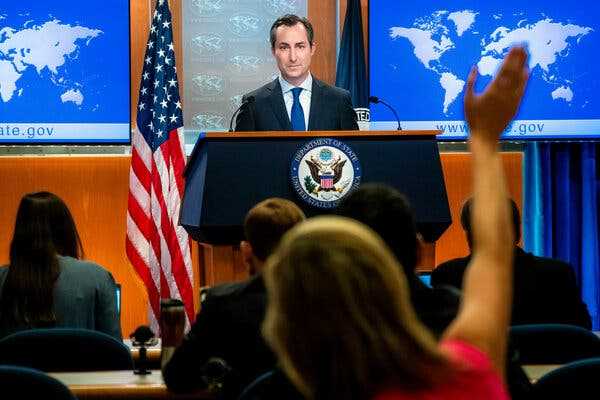A manufactured video fabricated comments by the State Department spokesman, Matthew Miller.
Listen to this article · 7:35 min Learn more
- Share full article

The fabricated video of Matthew Miller, the State Department spokesman, had telltale clues of manipulation. The lip sync was off, and Mr. Miller’s shirt and tie changed color midway through.
A day after U.S. officials said Ukraine could use American weapons in limited strikes inside Russia, a deepfake video of a U.S. spokesman discussing the policy appeared online.
The fabricated video, which is drawn from actual footage, shows the State Department spokesman, Matthew Miller, seeming to suggest that the Russian city of Belgorod, just 25 miles north of Ukraine’s border with Russia, was a legitimate target for such strikes.
The 49-second video clip, which has an authentic feel despite telltale clues of manipulation, illustrates the growing threat of disinformation and especially so-called deepfake videos powered by artificial intelligence.
U.S. officials said they had no information about the origins of the video. But they are particularly concerned about how Russia might employ such techniques to manipulate opinion around the war in Ukraine or even American political discourse.
Belgorod “has essentially no civilians remaining,” the video purports to show Mr. Miller saying at the State Department in response to a reporter’s question, which was also manufactured. “It’s practically full of military targets at this point, and we are seeing the same thing starting in the regions around there.”
“Russia needs to get the message that this is unacceptable,” Mr. Miller adds in the video, which has been circulating on Telegram channels followed by residents of Belgorod widely enough to draw responses from Russian government officials.
The claim in the video about Belgorod is completely false. While it has been the target of some Ukrainian attacks, and its schools operate online, its 340,000 residents have not been evacuated.
We are having trouble retrieving the article content.
Please enable JavaScript in your browser settings.
Thank you for your patience while we verify access. If you are in Reader mode please exit and log into your Times account, or subscribe for all of The Times.
Thank you for your patience while we verify access.
Already a subscriber? Log in.
Want all of The Times? Subscribe.
SKIP ADVERTISEMENT
Source: nytimes.com



